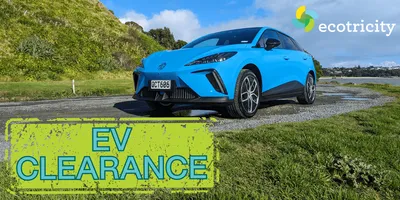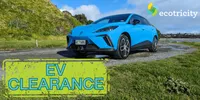Where will electric vehicles go next?
21/08/2019

Every day, more New Zealanders are taking advantage of the cost-savings and eco-benefits of driving an electric vehicle. There’s already a growing range of EVs on the market, including SUVs and vans, and vehicles for all price brackets with ranges up to 1000+ kms.
Falling prices, government incentives, and exciting technological developments in the EV sector means the future looks bright. Find out what the future of EVs might look like:
Exciting technology
Take a look at some of the upcoming EVs to see just how far the technology has come in a few short years. Tesla’s compact SUV Model Y will offer 242 miles and will seat seven passengers. The Polestar will offer 500mile range with a sleek Scandinavian design and all the features of a high-performance vehicle. It’s also the first car to run natively on Android. A tablet in the dashboard will enable you to navigate using Google Maps and call up any other information or entertainment you need.
Changing power needs
If New Zealanders got behind EVs and adopted them as a more sustainable alternative, our electrical grid as it stands would be severely stretched. Infrastructure upgrades would be needed to facilitate the increase in energy, and we’d have to find new ways to storing the energy generated via our renewable resources so it could be used on demand.
One potential solution is for households to be able to generate their own energy to power EVs. Like EVs, technological advances in this space means it’s becoming more affordable to generate and store household energy via solar and wind.
Batteries are getting smarter
Many consumers believe EV batteries degrade over time, resulting in a decrease in the vehicle’s overall range. The latest technological advances are eliminating this issue. Recently, _Forbes_reported that contrary to believe, the latest EV battery tech means batteries no longer degrade over time or kms travelled.
The price of batteries is falling dramatically, and their capacity is increasing. This will be the death knell for the internal combustion engine.
China is investing
China now has more than 2 million EVs on the road, more than any other country. By 2020, China is expected to account for around 60% of EV sales. Part of this increase in popularity is the production of small EVs designed for short trips – these cars have a low price tag that makes them economical to purchase. The Chinese government is responding with more investment in infrastructure.
We all know that China has a lot of economic power across the world. Their interest in EVs will help increase worldwide uptake of the technology.
Where do you think EVs will be in the future? What do you think needs to happen now in order to increase EV adoption across the globe?







